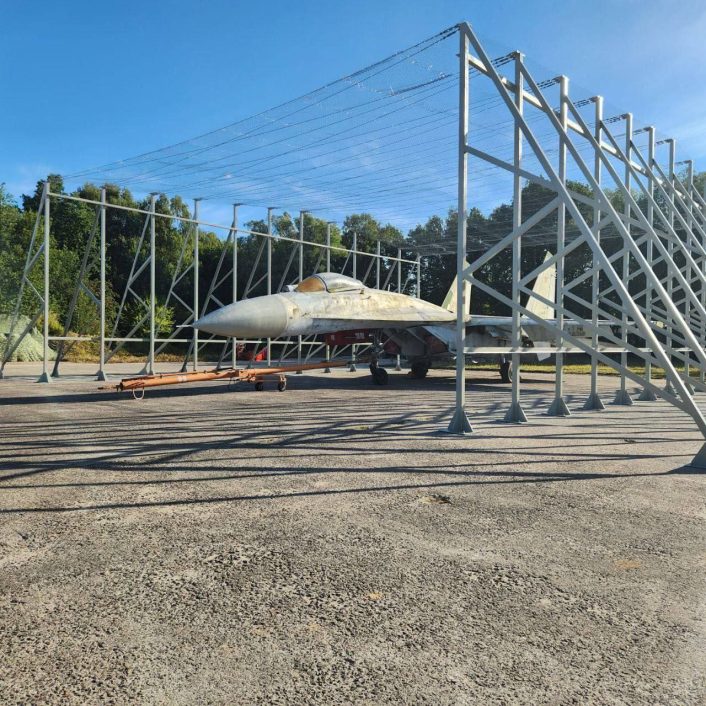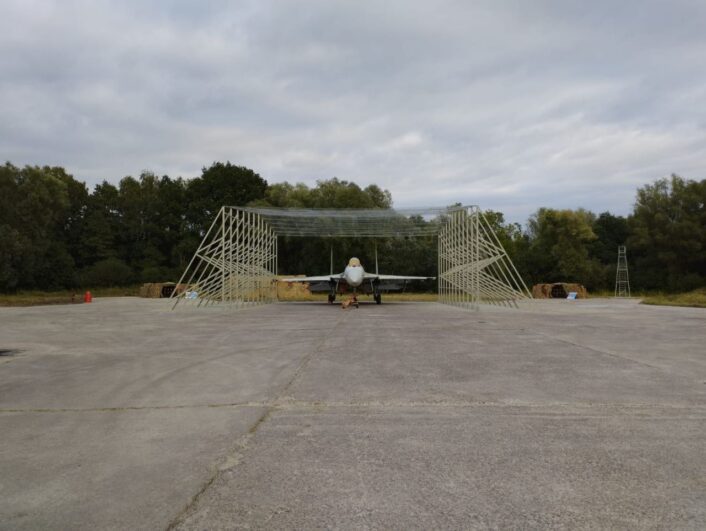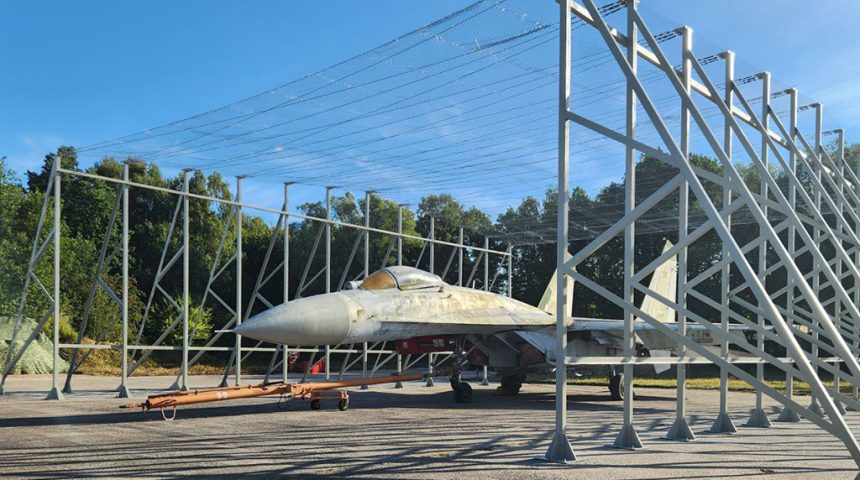Russians are not only using car tires to protect their aircraft from Ukrainian kamikaze drones….
As already reported in details recent satellite imagery of Engels-2 airbase has exposed a certain number of Tu-95 Bear and Tu-160 Blackjack bombers with their wings and part of the fuselage covered with car tires. Another image, taken from the ground at an unknown airfield and circulated online more or less one week after the images from Engels, shows a Sukhoi Su-34 Fullback bomber with tires on the fuselage, wings and horizontal stabilizers.
The reason for the presence of car tires on the top of the aircraft is not known and many theories have been formulated.
According to Ukrainian sources, the tires are being used as a sort of makeshift protection from attacks carried out with kamikaze drones. Others suggest the bombers are retired airframes being used as decoys to get possible strikes away from operations aircraft, or to make radar targeting by Ukraine’s long-range missiles harder (a theory backed by the fact that the tire cover on the Tu-95 was observed altering the synthetic aperture radar signature of the bomber).
Whatever, on Sept. 10, 2023, the popular FighterBomber Telegram channel, with close ties with the Russian Aerospace Forces’ aircrews, has posted some new images, showing what’s described as an anti-drone structure being fielded for test purposes at an unspecified Russian airfield.

A rough translation of the first part FighterBomber’s post reads as follows:
“This solution was urgently developed, and literally in a couple of days it was installed at one airfield to protect aircraft from drones. The dimensions allow this solution to be used for almost all tactical aircraft and some types of helicopters. If necessary, tarpaulin curtains impregnated with fire-resistant compounds are added in front and behind.”

How the system works is not clear: maybe the net is used to repel hostile drones that would get caught up in the wires. Or, perhaps, the structure will prevent the bombs, shrapnel or fragments to fall on the target after the explosion of the suicide drone.
Interestingly, the aircraft depicted in the images is not an operational one, but it appears to be a retired Su-27 Flanker: this may indicate that the new anti-protection system is currently being tested and could be modified before being deployed at the airbases closer to Ukraine.
Anyway, the new system is probably more effective than putting tens of tires on the aircraft to protect them from kamikaze drones or hide them from the terminal guidance of the Ukrainian missiles, and increasing the times to prepare the aircraft for a new sortie: the aircraft can taxi inside and outside of the sort-of wire mesh “shelter” as it would do with a standard hangar or hardened concrete shelter.









